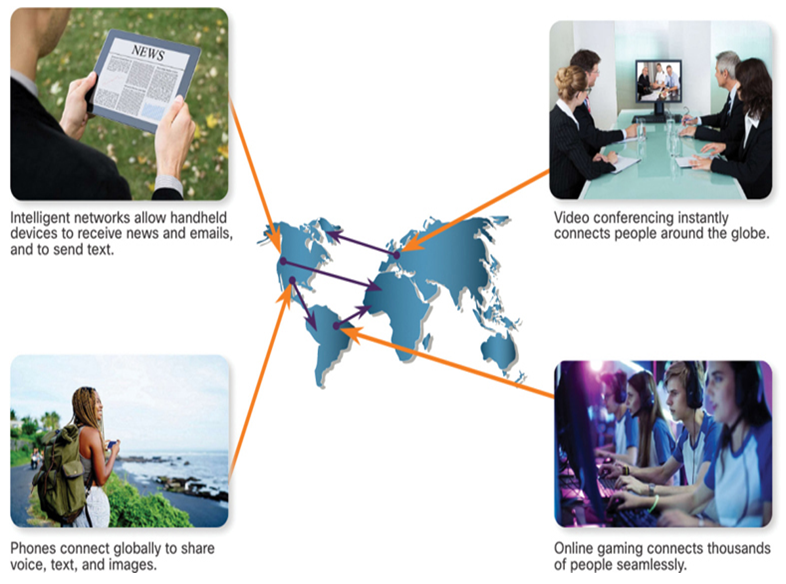Upon completion of this chapter, you will be able to answer the following questions:
• What is the concept of a network?
• What is network data?
• What is network transmission speed and capacity?
This chapter uses the following key terms. You can find the definitions in the Glossary.
small office/home office (SOHO)
Welcome to Communications in a Connected World! Hi, I’m Webster! I’ll be accompanying you as you move through this course. Let me introduce you to my friend Kishori! Kishori has been a nurse in a hospital in Karnataka, India for about 20 years. When Kishori went to nursing school, she had no idea how much networking technology she would be using every day. At home, she only has a laptop, a smartphone, and a tablet. At work she uses a laptop, a desktop, a printer, and network-connected hospital equipment. Sometimes these devices do not always communicate. When equipment does not work properly in a hospital, lives can be at risk! Kishori would like to better understand how it all works. Would you?
Networks are all around us. They provide us with a way to communicate and share information and resources with individuals in the same location or around the world. Everyone and everything is becoming connected to the network and the internet.
Refer to the online course to view this video.
“Hey Shad, are you online?” “Of course, I am!” How many of us still think about whether or not we are “online”? We expect our devices, cell phones, tablets, laptops and desktop computers to always be connected to the global internet. We use this network to interact with our friends, shop, share pictures and experiences, and learn. The internet has become such a part of everyday life that we almost take it for granted.
Normally, when people use the term internet, they are not referring to the physical connections in the real world. Rather, they tend to think of it as a formless collection of connections. It is the “place” people go to find or share information.
Who Owns “The Internet”? (1.1.3)
The internet is not owned by any individual or group. The internet is a worldwide collection of interconnected networks (internetwork or internet for short), cooperating with each other to exchange information using common standards. Through telephone wires, fiber-optic cables, wireless transmissions, and satellite links, internet users can exchange information in a variety of forms, as shown in the figure.
Everything that you access online is located somewhere on the global internet. Social media sites, multiplayer games, messaging centers that provide email, online courses — all of these internet destinations are connected to local networks that send and receive information through the internet.
Think about all of the interactions that you have during the day which require you to be online. Some examples are shown in Figure 1-1.

Figure 1-1 Online Interactions
